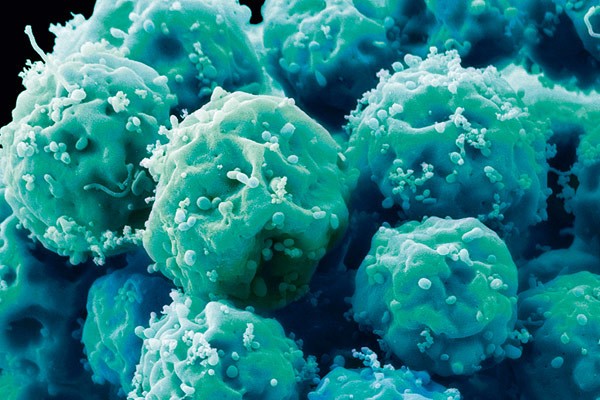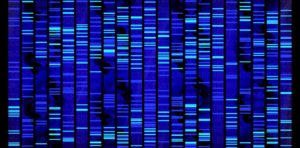
Recently Diagnosed or Relapsed? Stop Looking For a Miracle Cure, and Use Evidence-Based Therapies To Enhance Your Treatment and Prolong Your Remission
Multiple Myeloma an incurable disease, but I have spent the last 25 years in remission using a blend of conventional oncology and evidence-based nutrition, supplementation, and lifestyle therapies from peer-reviewed studies that your oncologist probably hasn't told you about.
Click the orange button to the right to learn more about what you can start doing today.
- You are here:
- Home »
- Blog »
- Multiple Myeloma »
- Multiple Myeloma- Viral Therapies?
Multiple Myeloma- Viral Therapies?

“And then I focused on the viral therapies, the measles infusion, and how as cancer patients the chemo and the radiation can be so toxic, it can be so debilitating. The time for travel, the expense of it all, it just kind of drags on forever and you’re never finished.
Notice that the article headline below avoids the word cure. While viral therapies for all cancers, not just for multiple myeloma (MM), hold great potential, they present some fundemental challenges.
Here is what is so odd about Stacy Erholtz. She had already gone through and relapsed after two autologous stem cell transplants wiping out all antibodies that might inhibit the measles virus. Her myeloma exhibited a lot of genetic variation which could make Stacy’s MM more visible to her immune system. Could these two things have made Tracy’s MM more reponsive to the measels therapy?
According to the article written by Dr. Brian Durie, also linked below, not only did Stacy’s particular lack of antibodies possibly encourage her response, other MMers who have undergone measles vaccine therapy own antibodies killed the vaccine before it had a chance to attack the MM.
Have you been diagnosed with MM? To learn more about both conventional and non-conventional MM therapies scroll down the page, post a question or comment and I will reply to you ASAP.
Thank you,
David Emerson
- Myeloma Survivor
- MM Cancer Coach
- Director PeopleBeatingCancer
Recommended Reading:
- Get Your Myeloma Staged before you walk out of your Oncologist’s Office!
- Nutrition Research and The Multiple Myeloma Survivor’s Diet
- Multiple Myeloma: Antioxidant and Chemotherapy Combo Shows Significant Benefits
Oncolytic virus
“The potential of viruses as anti-cancer agents was first realised in the early twentieth century, although coordinated research efforts did not begin until the 1960s.[5] A number of viruses including adenovirus, reovirus, measles, herpes simplex, Newcastle disease virus and vaccinia have now been clinically tested as oncolytic agents.[6] Most current oncolytic viruses are engineered for tumour selectivity, although there are naturally occurring examples such as reovirus and the senecavirus,[7] resulting in clinical trials.[8]..”
Mayo Clinic patient treated by massive measles dose still cancer-free 5 years later
“It’s been five years since Stacy Erholtz underwent an experimental treatment for blood cancer that used enough measles vaccine to inoculate 10 million people, and she’s still celebrating her life, moment by moment.
“I’m not the kind of person who waits for the other shoe to drop,” said Erholtz, 54, of Pequot Lakes. “I was prepared to die, and I didn’t die,” she said. “I believe God has a plan.”
Dr. Stephen Russell, a professor of molecular medicine at the Mayo Clinic who spearheaded the treatment, said his research has failed to live up to his initial hope to use an engineered form of the measles virus as a kind of guided missile against multiple myeloma, a cancer that attacks white blood cells. Even so, he says, “Stacy has lived up to it.”
Erholtz recently was a guest speaker at the International Oncolytic Virus Conference in Oxford, England, where she talked about her life and the exhausting treatments she endured since her diagnosis in 2004, at the age of 40.
“And then I focused on the viral therapies, the measles infusion, and how as cancer patients the chemo and the radiation can be so toxic, it can be so debilitating. The time for travel, the expense of it all, it just kind of drags on forever and you’re never finished.
“But a treatment like viral therapy, for instance, for me, it was a 24-hour, very intense, extreme day, but 24 hours later it was over and I could leave the hospital…”
Erholtz was unusual. She didn’t have antibodies against the measles virus because she’d gone through two stem-cell transplants as part of her treatment for myeloma, which wiped them out. In addition, she sought the measles inoculation relatively soon after the myeloma flared up after her last stem-cell transplant, so the prevalence of cancer cells was unusually small compared with most other myeloma patients who seek treatment.
Finally, her cancer had a large number of mutations, which may have made it stick out to her immune system…
“Our clinical trials plans at the moment have built in 200 patients over the next two years. But in addition to that, we have a lot of academic groups saying, ‘Look, if you’ll only give us some virus, we’ll do a clinical trial … because we’re really excited to test it.’ ”
WHATEVER HAPPENED TO MEASLES VACCINE THERAPY? A STATUS REPORT
“In the meantime, there has been great progress with rVSV, the engineered alternate virus. There are no blood antibodies to worry about, and laboratory and animal experiments indicate good anti-myeloma activity, as well as safety. A recent paper in Blood shows benefit in acute leukemia combining the rVSV with the PD-LI inhibitor that helps release T cells to attack and enhance the viral killing.
For now, Dr. Russell says the plan is to use the rVSV alone in a phase I-II trial in relapsed/refractory myeloma. The proposed trial is close to final FDA approval and, if all goes well, it can begin in the third quarter of 2016. Dr. Martha Lacy, a colleague of Dr. Russell at the Mayo Clinic, is the Principal Investigator (PI) for this study…”
Oncolytic Virus Therapy: Using Tumor-Targeting Viruses to Treat Cancer
“Oncolytic viruses have long been viewed as tools for directly killing cancer cells. But a growing body of research suggests that some oncolytic viruses may work—at least in part—by triggering an immune response in the body against the cancer.
When a virus infects a tumor cell, the virus makes copies of itself until the cell bursts. The dying cancer cell releases materials, such as tumor antigens, that allow the cancer to be recognized, or “seen,” by the immune system…”


